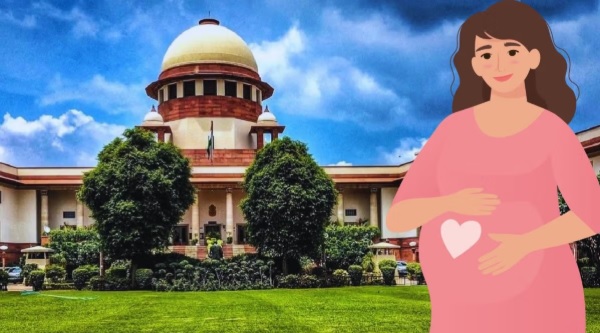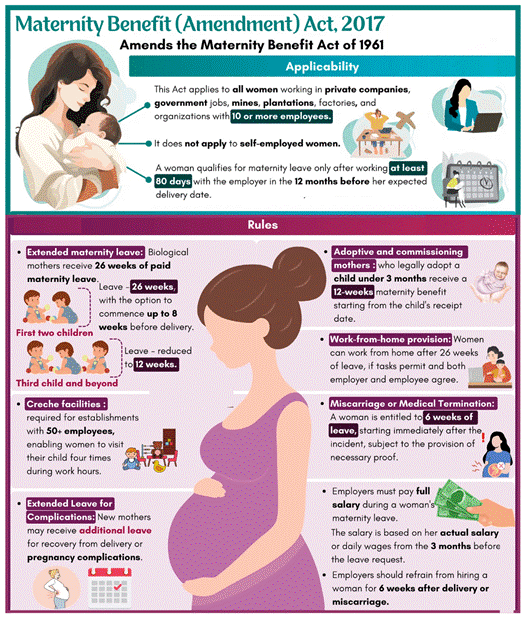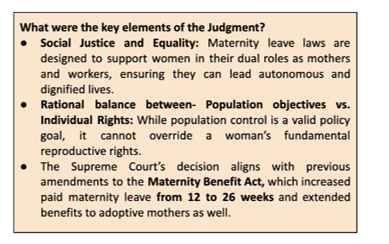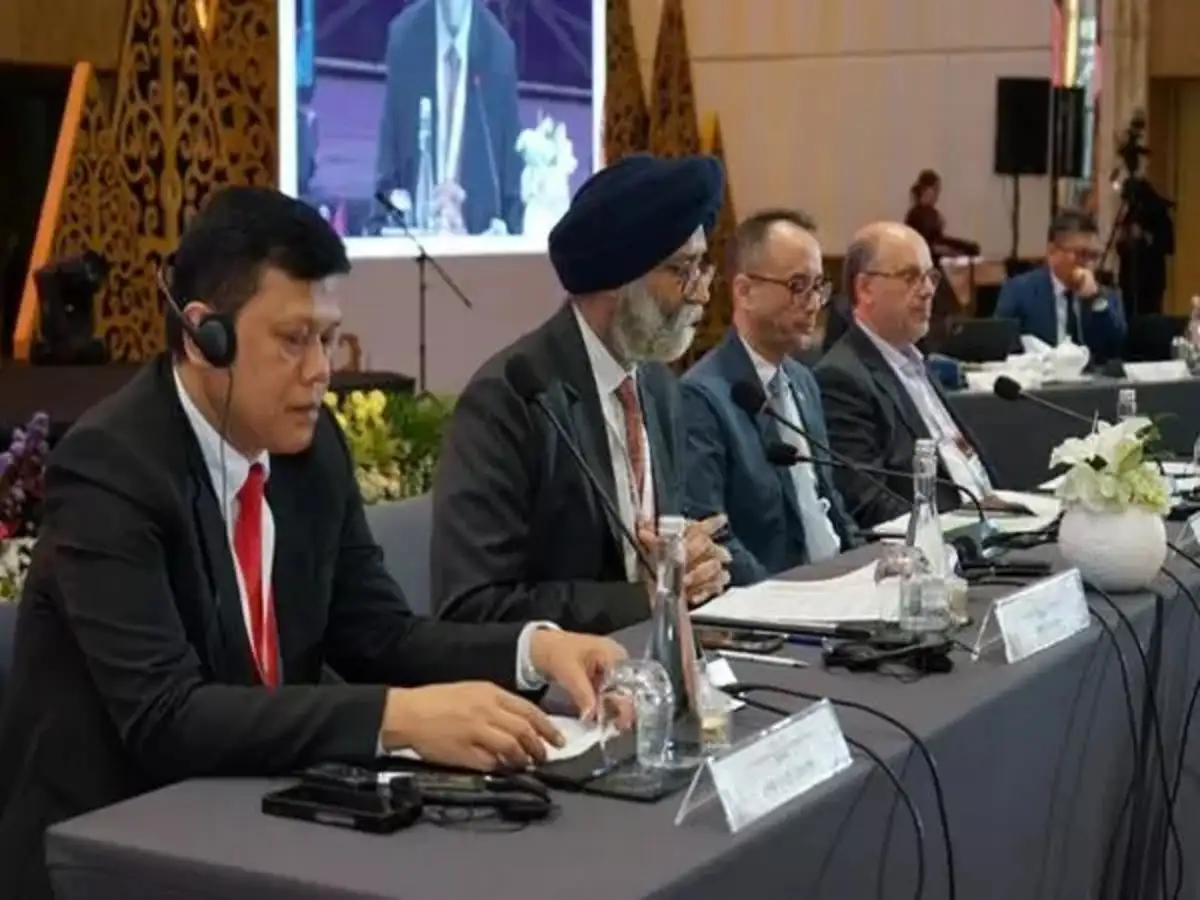- Courses
- GS Full Course 1 Year
- GS Full Course 2 Year
- GS Full Course 3 Year
- GS Full Course Till Selection
- Online Program
- GS Recorded Course
- NCERT (Recorded 500+ Hours)
- Polity Recorded Course
- Geography Recorded Course
- Economy Recorded Course
- AMAC Recorded Course
- Modern India, Post Independence & World History
- Environment Recoded Course
- Governance Recoded Course
- Science & Tech. Recoded Course
- International Relations and Internal Security Recorded Course
- Disaster Management Module Course
- Ethics Recoded Course
- Essay Recoded Course
- Current Affairs Recoded Course
- CSAT
- 5 LAYERED ARJUNA Mentorship
- Public Administration Optional
- ABOUT US
- OUR TOPPERS
- TEST SERIES
- FREE STUDY MATERIAL
- VIDEOS
- CONTACT US
Maternity Leave Part Of Reproductive Rights
Maternity Leave Part Of Reproductive Rights

Significance: GS I & II; Society;
Why in the News?
Recently, in May 2025, a landmark judgment - K. Umadevi v. Government of Tamil Nadu, the Supreme Court of India declared that maternity leave is an essential part of a woman’s reproductive rights.
- This decision came after a Tamil Nadu government school teacher was denied maternity leave for her third child, as state rules allowed such leave only for the first two children.
- The teacher argued that she had not availed any maternity benefits for her first two children, born before she joined government service.

Why is Maternity Leave a Reproductive Right?
- Integral to Maternity Benefits: The Supreme Court held that maternity leave is not just a workplace benefit but a core aspect of a woman’s reproductive rights. It is crucial for the health, well-being, and dignity of both mother and child.
- Constitutional Provision and protection: The right to reproductive choices, including maternity leave, falls under Article 21 of the Indian Constitution, which guarantees personal liberty and dignity.
-
- This was earlier established in the Suchita Srivastava v. Chandigarh Administration (2009) case.

- This was earlier established in the Suchita Srivastava v. Chandigarh Administration (2009) case.
- Human Rights Perspective: Reproductive rights are recognized globally as part of international human rights law, including the Universal Declaration of Human Rights (UDHR) - covers health, privacy, equality, non-discrimination, and dignity.
Why did the court emphasizematernity benefits as a fundamental human right?
- The Supreme Court stated that maternity leave is not just a workplace perk or a statutory benefit, but a core part of a woman’s reproductive rights—protected by the Constitution.
- The court explained that a woman’s right to make reproductive choices is central to her dignity and autonomy.
- Denying maternity leave harms a woman’s emotional and physical well-being and undermines her status and equality in society.
- The court made it clear that no institution or state policy can override these fundamental rights by imposing arbitrary restrictions, such as limiting maternity leave based on the number of children.
What are the broader implications and linkages of this judgement?
- Universal and Non-Discriminatory Access: All women employees (permanent/ temporary/ contractual/ daily wage) will be entitled to maternity leave as a matter of right—not just by contract or statute, but as an extension of the right to life and personal liberty under Article 21 of the Constitution.
- Stronger Legal Protection and Enforcement: Any denial of maternity leave can be directly challenged as a violation of fundamental rights, making it subject to judicial review and Constitutional remedies.
-
- Courts can strike down state or employer policies that conflict with this right, ensuring women have a clear legal pathway to enforce their entitlements.
- Alignment with International Human Rights: The judgment brings India’s legal framework closer to international standards on women’s rights and workplace equality, reinforcing commitments under treaties like the Universal Declaration of Human Rights.
- Social Justice and Gender Equality: This recognition promotes social justice by protecting the dignity of motherhood and addresses workplace gender discrimination to foster a more inclusive, equitable environment for women.
Conclusion: Historically, many countries have used maternity benefits as tools for population control, often restricting access based on the number of children. SC’s present ruling challenges this approach, emphasizing that reproductive rights—including maternity leave—should not be subject to coercive state policies but should empower women to make free, informed choices about their bodies and families.
|
PYQs Relevance: Which of the following statements is/are correct regarding the Maternity Benefit (Amendment) Act, 2017? I. Pregnant women are entitled for three months pre-delivery and three months post-delivery paid leave. II. Enterprises with crèches must allow the mother a minimum six creche visits daily. III. Women with two children get reduced entitlements. Select the correct answer using the codes given below: (UPSC CSE 2019)
|
|
Also Read |
|
| FREE NIOS Books | |




